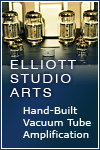I love vinyl, but was always looking for ways to improve the sound. I built a dynamic noise canceller circuit, installed equalizers, dynamic range expanders and all manner of processing to try and improve the sound of some recordings. When CD players first arrived on the scene I was in High School, and a couple of guys from our local community college came by our electronics class and told us about "perfect sound forever". I was skeptical but intrigued. It took a few years before I could afford to buy one (an ADC I believe) and a CD to go with it (Paul Simon's greatest hits). I was blown away by the lack of noise and distortion that plagued my records. But after time I got bored and kept buying vinyl... that is until about 1990 when you couldn't really buy new releases on vinyl anymore.
About 1995 my boss gave me his old Thorens TD125 mk1, in a box, in pieces. I had to glue the plinth back together, re-build and install the Rabco SL8-E tonearm and do all the necessary lube and adjustments. This is an adjustable spring suspended table. I have been using this table for the last 15 years and have done several modifications to improve the performance that I will list below.
1st- Completely disassemble and install self-adhesive thick sticky tar-like sheeting I picked up from a jobsite (it is used on the outside of new construction commercial buildings as a heavy vapor barrier) to the under-side of the platter and aluminium top plate in an attempt to damp vibrations. This made a subtle improvement in clarity and lowered the noise floor.
2nd- Finally sell of the old Rabco and install a pivoted arm. I picked up a used arm from a Music Hall MMF 5 and built a new arm-board out of plywood. This made a huge improvement and cleaned up much of the distortion on the inner-grooves that had always driven me nutso.
3rd- Install a vintage Audio Technica AT14sa cartridge with a stylus from an AT13ea. This was a top of the line cartridge back in the day (late 70's) but I didn't like the shibata stylus and opted for the elliptical from the AT13ea. I'd put this combo up against many modern high-priced cartridges. It blew away my Grado and works very well in the 9" MMF arm.
4th- FINALLY get an accurate alignment protractor! I had been using a dB systems protractor for years and have always been annoyed by the tracking distortion towards the inner grooves of my albums. I thought that was my fate until the recent article in Stereophile by Keith Howard on the subject (March 2010 issue). He states in the article that most alignment protractors are based on math that is an approximation. He offers on his website (www.audiosignal.co.uk) a simple program that will generate an alignment protractor that you can print out. You just enter your arms effective length and the inner and outer groove diameters you wish to use (explained in his article). SO, after printing it out and re-aligning my cartridge (I love the AT cartridges for their square sides and front - makes alignment easy) with a magnifying glass and much patience I was ready for the test drive. WOW! What a difference it made! I had no idea that tracking distortion could muddy up the sound so much. Everything is much more clear and natural sounding now, more relaxed and more detailed and liquid and (insert overused audiophile term here). No, really, it was that good.
5th- On the advice from several sources on the inter-web ;-) I removed the springs from the TD125 to make it a solid, non-suspended table. Since I've used them under components as feet to good effect I replaced the springs with cork bottle stoppers. (Ask me if you're confused and want more detail). This also made a major improvement in resolution and soundstaging, tightened up the bass and made the speed more stable.
So, after 15 years with this turntable and 30 years playing records, I've finally put to rest the tracking distortion that had been a bane to my existence. My turntable now sounds incredible, probably couldn't buy as good of performance for under $2500 bucks now. Of course the Elliott Studio Arts 66-001p preamp and 66-100 power amp have much to do with the wonderful sound...
Fostex FE206En Rear-Loaded Horn Speakers
10 years ago

